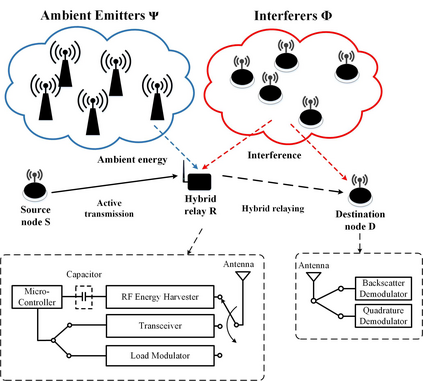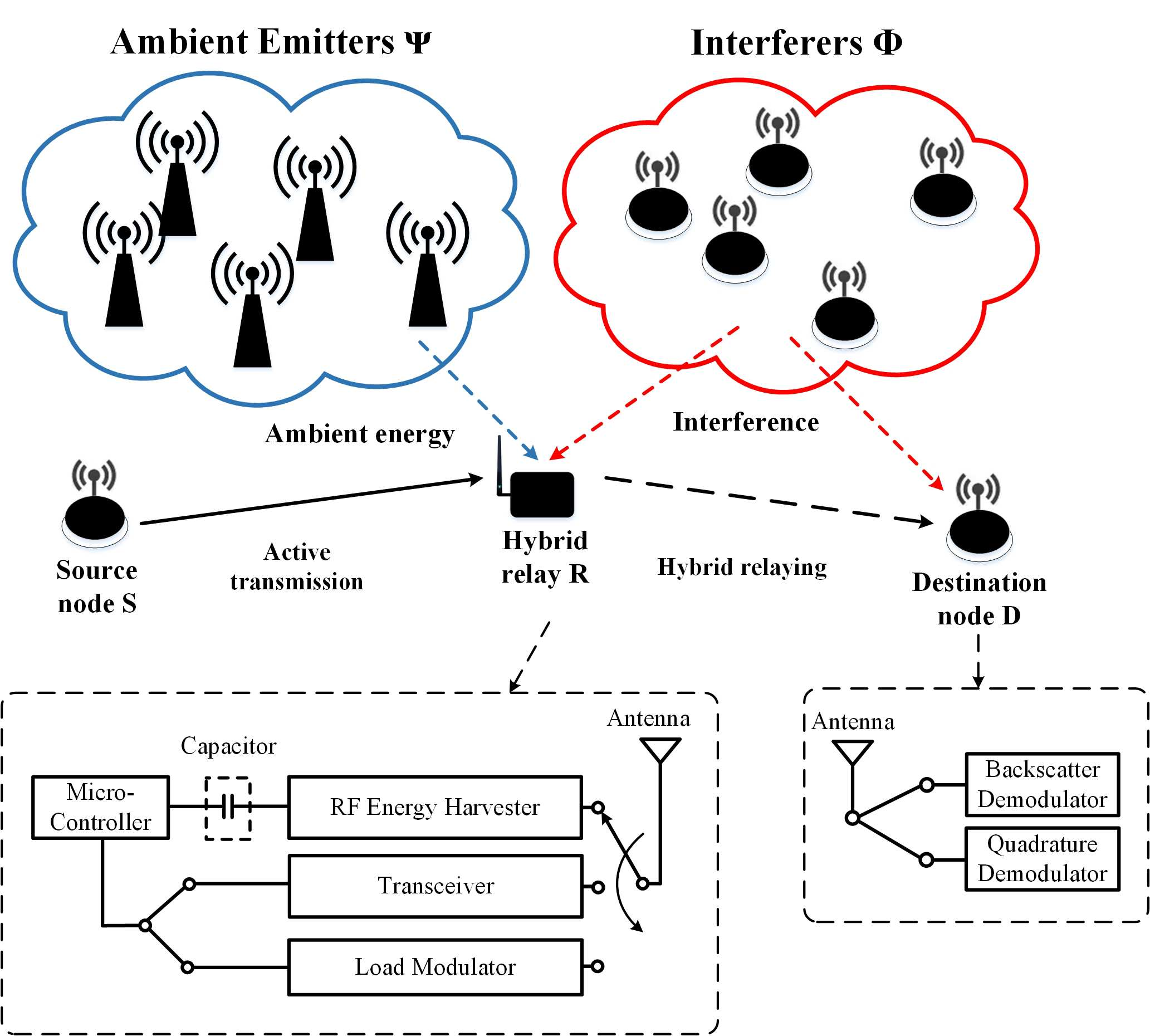Internet-of-Things (IoT) is featured with low-power communications among a massive number of ubiquitously-deployed and energy-constrained electronics, e.g., sensors and actuators. To cope with the demand, wireless-powered cooperative relaying emerges as a promising communication paradigm to extend data transmission coverage and solve energy scarcity for the IoT devices. In this paper, we propose a novel hybrid relaying strategy by combining wireless-powered communication and ambient backscattering functions to improve applicability and performance of data transfer. In particular, the hybrid relay can harvest energy from radio frequency (RF) signals and use the energy for active transmission. Alternatively, the hybrid relay can choose to perform ambient backscattering of incident RF signals for passive transmission. To efficiently utilize the ambient RF resource, we design mode selection protocols to coordinate between the active and passive relaying in circumstances with and without instantaneous channel gain. With different mode selection protocols, we characterize the success probability and ergodic capacity of a dual-hop relaying system with the hybrid relay in the field of randomly located ambient transmitters. The analytical and the numerical results demonstrate the effectiveness of the mode selection protocols in adapting the hybrid relaying into the network environment and reveal the impacts of system parameters on the performance gain of the hybrid relaying. As applications of our analytical framework which is computationally tractable, we formulate optimization problems based on the derived expressions to optimize the system parameters with different objectives. The optimal solutions exhibit a tradeoff between the maximum energy efficiency and target success probability.
翻译:在本文中,我们提出了一个新型混合中继战略,将无线动力通信和环境反弹功能结合起来,以提高数据传输的实用性和性能。特别是,混合中继器可以从无线电频率信号中获取能源,并利用离散目标能量进行主动传输。或者,混合中继器可以选择对事件RF信号进行环境反射以进行被动传输。为了有效利用环境RF资源,我们设计了模式选择协议,以协调在无即时频道收益的情况下进行主动和被动中继的过程。根据不同的模式选择协议,我们将双向中继系统的成功概率和自动回传能力与在随机频率(RF)信号中的混合中继功能用于主动传输。或者,混合中继器可以选择对事件RF信号进行环境反射后被动传输。为了高效利用环境资源,我们设计了模式选择程序,将双向式中继系统的成功概率和性能与数据传输中继系统的混合中继器性中继器性能表现能力,我们随机地将优化中继系统的分析和中继系统的进展定位,从而调整了中继器传输网络的进度。





